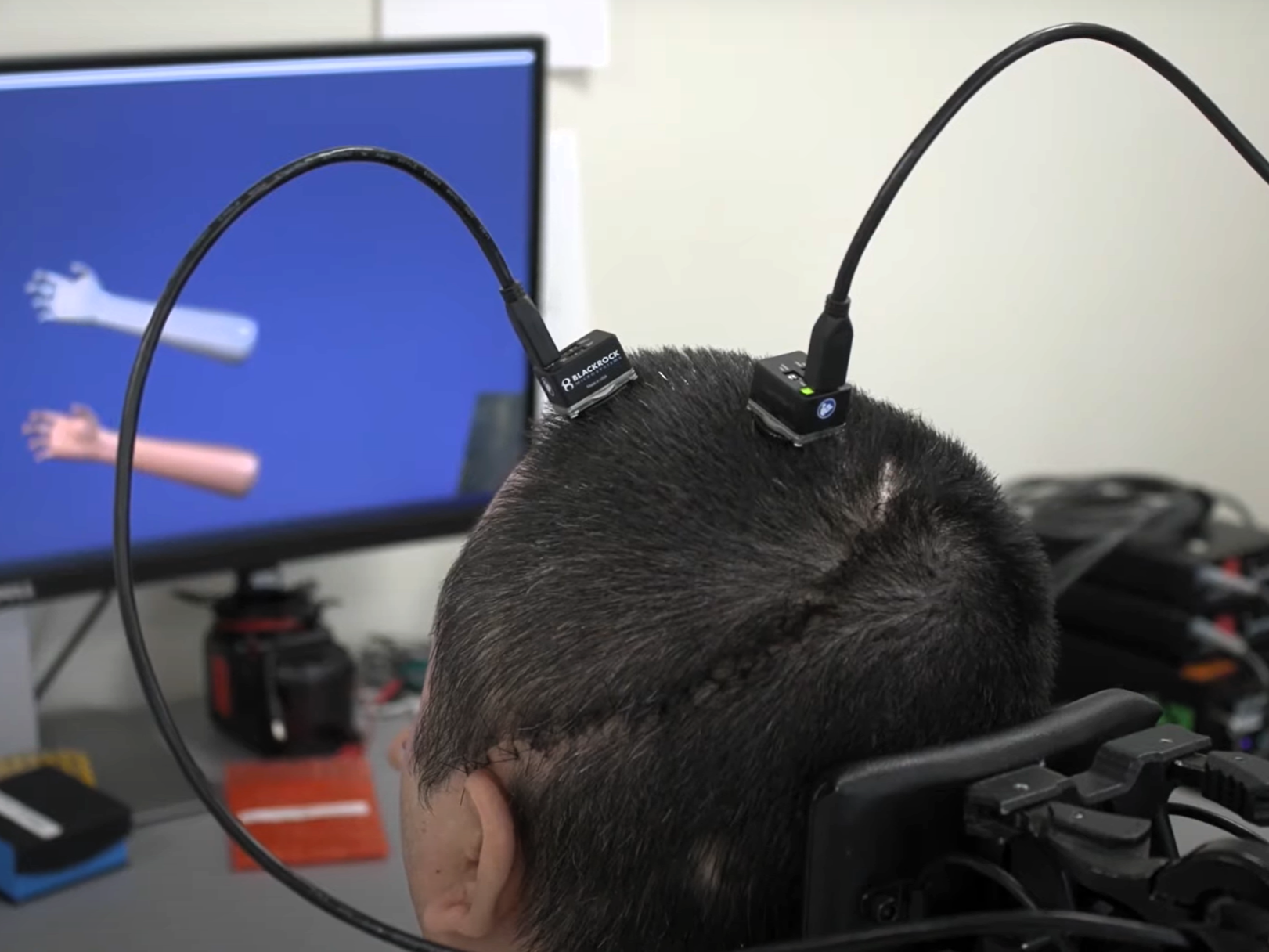Paralysed man regains feeling and movement with AI brain implant
‘I can feel the touch of someone holding my hand,’ paralysed man says. ‘It’s overwhelming’

Your support helps us to tell the story
From reproductive rights to climate change to Big Tech, The Independent is on the ground when the story is developing. Whether it's investigating the financials of Elon Musk's pro-Trump PAC or producing our latest documentary, 'The A Word', which shines a light on the American women fighting for reproductive rights, we know how important it is to parse out the facts from the messaging.
At such a critical moment in US history, we need reporters on the ground. Your donation allows us to keep sending journalists to speak to both sides of the story.
The Independent is trusted by Americans across the entire political spectrum. And unlike many other quality news outlets, we choose not to lock Americans out of our reporting and analysis with paywalls. We believe quality journalism should be available to everyone, paid for by those who can afford it.
Your support makes all the difference.A paralysed man has regained feeling in his limbs after an AI-enabled implant was placed in his brain.
The first-of-its-kind clinical trial used novel stimulation technology to restore the sense of touch and movement to 45-year-old Keith Thomas, who was paralysed from the chest down in 2020 after diving into a swimming pool.
After living as a quadriplegic for more than a year, Mr Thomas was approached by the Feinstein Institutes for Medical Research in the US to take part in a study that proposed a double neural bypass to re-route signals from the brain in order to restore movement and sensation.
Artificial intelligence was able to re-link his brain to his body through microchips implanted into his brain during a 15-hour surgical procedure.
“This is the first time the brain, body and spinal cord have been linked together electronically in a paralysed human to restore lasting movement and sensation,” said Chad Bouton, a professor at the Institute of Bioelectronic Medicine at the Feinstein Institutes, who led the clinical trial.
“When the study participant thinks about moving his arm or hand, we ‘supercharge’ his spinal cord and stimulate his brain and muscles to help rebuild connections, provide sensory feedback, and promote recovery. This type of thought-driven therapy is a game-changer.”
Over 100 million people around the world currently live with some form of paralysis or movement impairment, with the scientists hopeful that the new method could provide new pathways toward improving the condition of many of them.
Mr Thomas has already regained more than double his arm strength since enrolling in the clinical trial, and also reported feeling sensations in his forearm even when the system was switched off.
“There was a time that I didn’t know if I was even going to live, or if I wanted to, frankly,” said Mr Thomas.
“Now I can feel the touch of someone holding my hand. It’s overwhelming.”

Join our commenting forum
Join thought-provoking conversations, follow other Independent readers and see their replies
Comments